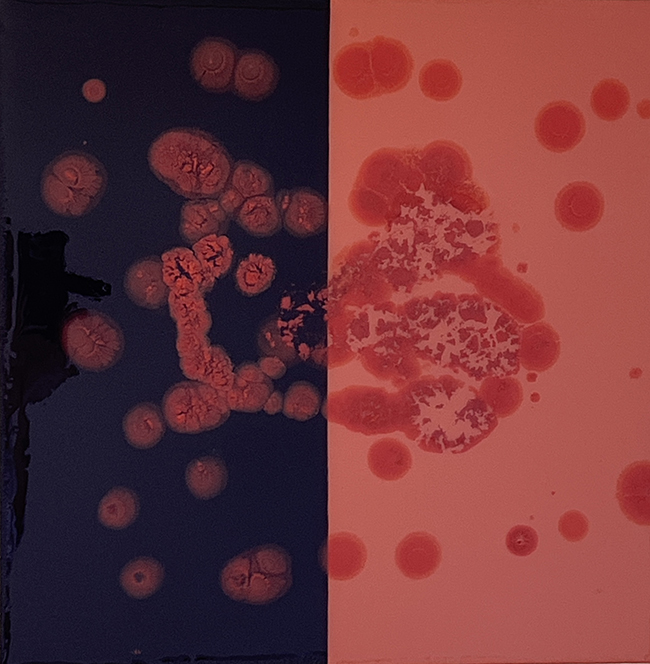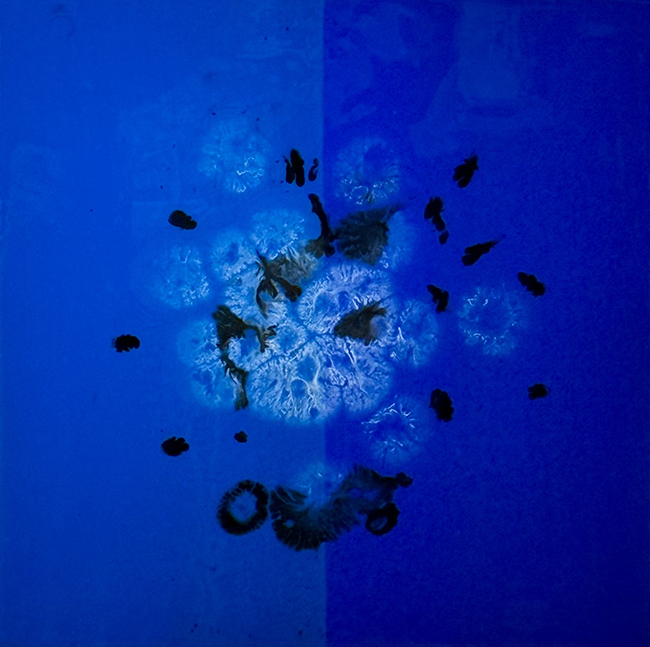Garda Alexander is a German-born artist who now lives and works in Switzerland. Her art isn’t showy, loud, or overly conceptual—it’s rooted in something older and quieter: the natural world. With a background in both painting and sculpture, her work crosses disciplines but stays focused on one thing—our connection to life through color, space, and form. Whether she’s working on a spatial installation, a canvas, or a sculptural piece, there’s a steady hum of presence in what she creates.

Nature has always been her point of return. From early on, it became a personal refuge and a creative source. That closeness to the earth and sky still informs everything she does. What sets her apart is not just her style but her way of inviting others into the experience. Each piece is less a finished product and more of a field of energy—a space to step into, rather than just observe.

ESSENCE
By Garda Alexander
“I create ENERGY FIELDS, fields of perception through color, light, and form.”
That’s how Alexander describes her work, and it’s not an exaggeration. Her art is meant to be felt first and understood later—if at all. At the core of her practice is a fascination with the sensory power of color and light. She doesn’t just use these elements as decorative tools; they’re the main event.
Her paintings, especially those from her ESSENCE series, often read like meditative portals. These aren’t literal landscapes or figures, but impressions—glimpses into how color behaves when freed from strict structure. She lets pigments move with minimal interference. It’s a technique she uses deliberately, especially in the Tracks series.
In these works, paint and lacquer are poured or guided into motion. The pigments settle into patterns not entirely controlled by the artist. She steps back and lets nature do part of the work. The result is a visual rhythm that feels spontaneous, but not chaotic. It’s as if the image reveals itself gradually, like sunlight through shifting branches.
The process is important here. Unlike many contemporary artists who build their compositions through layers of correction or digital tools, Alexander lets chance have a seat at the table. The paint runs. The form dissolves. What’s left behind is something organic, unpredictable, and full of tension between order and release.
Color is its own language in her work. She uses it not just to evoke emotion, but to suggest presence. There’s a cosmic sense to how colors blend or hover—sometimes sharp, sometimes muted, always intentional. In some works, the palette leans into bold, energetic tones. In others, it recedes into soft gradients. But in both cases, light plays a key role. The works don’t sit still—they shift as you do.
Form also holds weight, but not in a rigid way. She describes how form, in certain pieces, “dissolves in a process” that resists total control. That surrender is where much of the impact lies. The boundaries in her work aren’t drawn—they emerge. This is especially clear in her spatial concepts and installations.
These aren’t objects meant to dominate a space; they’re meant to activate it. She creates environments where perception shifts depending on your angle, movement, and proximity. Whether indoors or outside, these pieces remind the viewer that art doesn’t have to shout to change the way we see.
At the heart of it all is her relationship with nature. Not nature as image, but as experience. The way light hits a field at dusk, the glint of water, the movement of wind through branches—these are her reference points. That connection feels honest, not forced. There’s no message pasted over the work. It’s about tuning in rather than decoding.
Her art isn’t didactic, and it doesn’t ask for a particular response. Instead, it makes space for reflection. It asks the viewer to slow down, to step into the field of color and simply notice. That’s harder than it sounds in a world of endless images and fast attention. But Alexander’s work isn’t about trends. It’s about stillness, about seeing, about feeling.
And that’s where her work lands—not in theory, but in the body. It lingers not because it explains something, but because it bypasses explanation altogether. It’s not art you look at once and walk away from. It’s something you carry with you, quietly.

